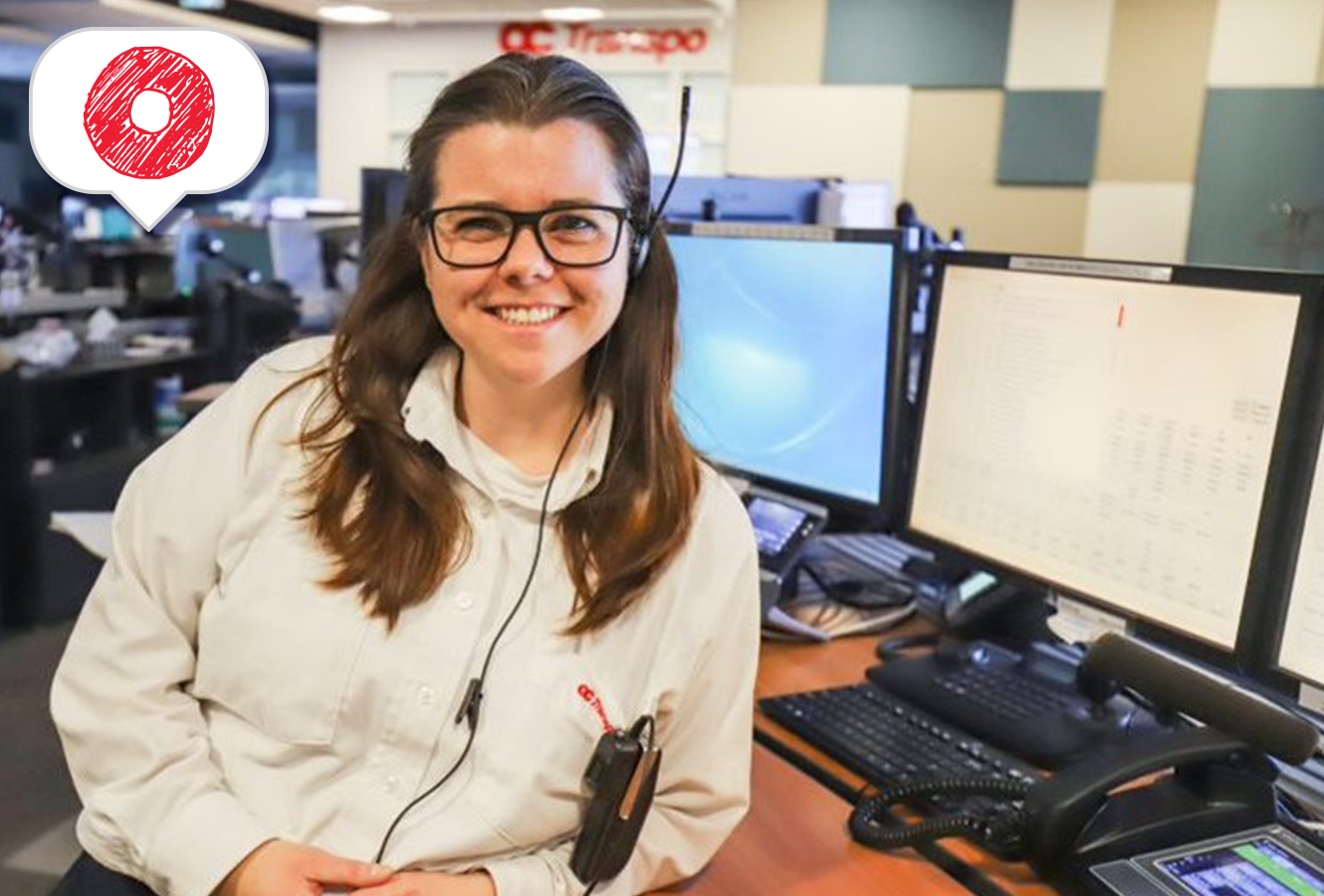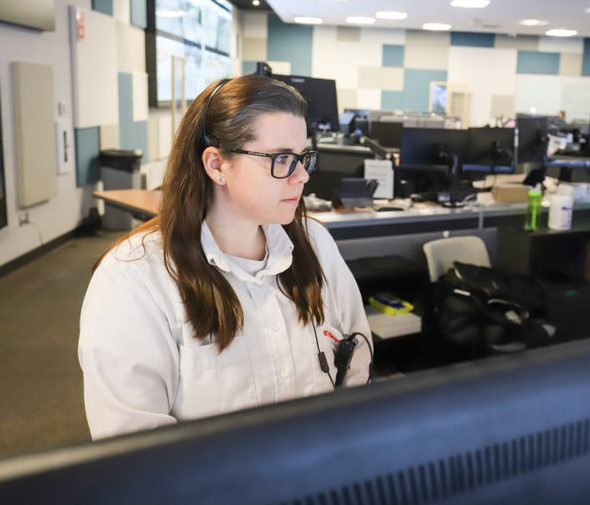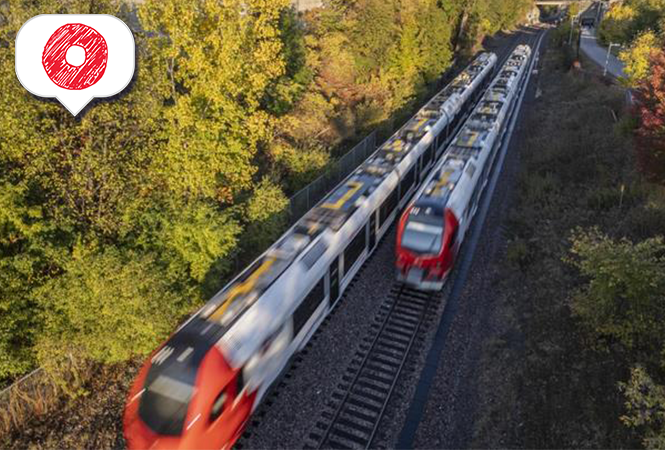A Day In The Life - Electric Rail Controller

Electric Rail Controller, Ceilidh is seen here in OC Transpo’s Transit Operations Control Centre.
What happens when there is a medical emergency on a train?
Why are trains sometimes temporarily held?
How do trains know when they have to switch tracks?
Every train movement on O-Train Line 1 is carefully automated; however, sometimes there are incidents or emergencies that need troubleshooting.
Electric Rail Controllers (ERC) play an important role in helping you safely arrive at your destination.
ERCs are constantly monitoring the rail service and are ready to respond if something happens to help minimize impacts to your commute.
Let’s get to know OC Transpo’s ERCs.
What is an ERC?
There are multiple layers of safety built into the O-Train system.
While a number of these layers are automated, ERCs are monitoring operations and standing by to respond.
The TOCC is the brain of all transit operations.
This is where we carefully manage all O-Train, bus, and Para Transpo service.
ERCs can typically be found behind a bank of screens monitoring camera feeds and operating conditions, and helping staff when issues arise.
They watch out for anything unusual, ready to react to ensure your safety and minimize any impact on your commute.
What is an average day for an ERC?
Meet Ceilidh. She started as an ERC in March 2021.
A typical shift is eight hours long and rotates across three different operational desks.
When Ceilidh arrives for her shift, she usually finds herself at the communications desk and is brought up to speed on the current operation of the system
It’s here where ERCs keep an eye out for any issues customers bring to our attention and then escalate things that may need addressing by a technician.
They also oversee public announcements on station platforms and updating transit information display screens with critical information.
“We really rely on each another and we are very efficient with our decision making,” she said.
The next desk an ERC can be found at is the Supervisory Control and Data Acquisition Software (SCADA) desk. Here ERCs may receive alerts if elevators, escalators or train switch heaters are not working properly.
Once an issue is identified, the ERC immediately issues a work order to the appropriate technician.
The SCADA desk can remotely control the power that supply the trains. It also controls the emergency tunnel ventilation system in the underground tunnel and stations.
The third location, the mainline controller desk, is crucial to the safe operation of Line 1.
While working here, the ERC is responsible for monitoring and controlling train movements and customer safety.
At this desk, ERCs are in constant communication with the Electric Rail Operators (EROs) who are driving the trains.
They are also keeping an eye on Closed Circuit TV (CCTV) cameras to ensure passengers are safe.
Train movements are highly automated by the Computer-Based Train Control (CBTC) System to maintain a safe distance between trains and the frequency in which trains arrive at each station.
Unplanned issues such as medical emergencies or mechanical issues will require a diversion plan to allow trains to bypass impacted areas. In situations like this, the ERC can:
- Halt trains to prevent bunching
- Divert trains around impacted areas. See how this works here
- Implement R1 replacement bus service to bridge gaps in train service?
All of these activities help keep you moving as efficiently as possible.

Ceilidh’s safety message to passengers is stay clear of the yellow tactile wayfinding strips on station platforms.
What is one thing you wish customers knew?
Ceilidh says an issue that ERCs are constantly aware of is customer safety on the train platform.
There are often times when waiting passengers, including children who are excited to see the train, will step onto the yellow tactile wayfinding strips and stretch out to see if the next train is on its way.
“It’s a cause for concern for all ERCs and EROs,” she said. “It’s not safe. It’s something passengers should keep in mind.”
When they see a situation like that, ERCs are on the radio alerting station staff to the situation. That’s when passengers are reminded to step back to be safe.
Ceilidh and her colleagues hold a lot of responsibility and manage complex issues.
She says she is proud of the dedicated team effort the entire ERC group puts in every day to ensure the safe departure and arrival of all our customers.
Was this information helpful? Do you have a story to suggest? Let us know.

